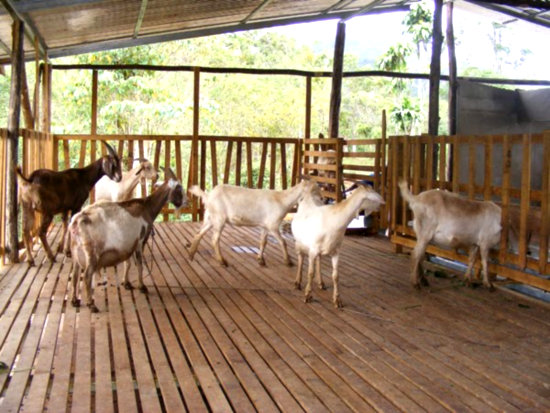
When it comes to goat raising, providing the right housing is crucial for their health, comfort, and productivity. A well-constructed goat house offers shelter from the elements, promotes good hygiene, and ensures the safety and well-being of your animals. Proper housing also plays a significant role in preventing theft, facilitating better management, and encouraging higher reproductive rates. Let’s explore the key considerations and specifications for creating a functional and efficient goat housing setup.
Importance of Proper Goat Housing
Quality housing is essential not only for protecting your goats from harsh weather conditions but also for fostering a healthier living environment. A well-designed goat house can:
- Enhance overall comfort and reduce stress
- Contribute to higher reproduction rates
- Simplify cleaning and waste management
- Safeguard your goats from predators and theft
Ideally, a goat house should offer shelter from strong winds, heavy rainfall, wet ground, and temperature fluctuations. It should also be easy to clean, well-ventilated, and designed for efficient waste disposal.
Selecting the Right Location for Goat Housing
For optimal drainage and comfort, place your goat house on a gentle slope or in sandy soil, which allows water to flow away from the structure. The location should ideally be close to a reliable feed source to minimize the effort spent bringing in food and water. Additionally, positioning the house to maximize sunlight and airflow will keep the environment dry and airy.
Housing Specifications for Goats
Goat housing should be designed with careful attention to both functionality and durability. Here’s how you can set up a goat house:
- Floor Space Requirements: Provide a minimum of 15-20 square feet of space per adult goat to ensure they have room to move and relax. For housing two does and one buck together, a 6’ × 8’ structure is ideal. The buck should have separate housing to prevent potential conflicts.
- Elevated Floor: Raise the floor at least 3 feet above the ground to make cleaning easier and to prevent the buildup of manure. This height allows for effective waste removal while keeping the animals dry.
- Ventilation: Good airflow is essential to prevent the buildup of moisture and odors. Consider using bamboo slats for the walls, spaced around 4 inches apart, to allow air circulation. Ensure that the house has adequate openings to allow fresh air to flow freely.
- Drainage and Cleanliness: It’s important not to nail the floorboards too closely together. Leave small gaps between the slats to allow manure to fall through, keeping the flooring clean and dry.
- Protection from Winds: Add a sack cover on the windward side of the house to shield the goats from strong winds. This cover can be rolled up when not needed to allow more airflow.
Materials for Construction
Use locally available, durable materials to construct the goat house. Note: For two does and one buck raised together, the size of the goat house will be 6′ × 8′. Here are a few suggestions:
- Bamboo: Bamboo is an excellent building material due to its strength and availability. To increase its durability, treat the bamboo by applying a mixture of crude oil and kerosene (1 part crude oil to 2 parts kerosene) and sun-dry it for 4-7 days. Bamboo harvested at the right time—mature, light green or yellow—is ideal for construction.
- Ipil-ipil: Remove the bark from Ipil-Ipil logs and soak them in running water for several days to leach out carbohydrates. Dry thoroughly before use to prevent fungal growth. Use treated Ipil-Ipil wood for posts, beams, and flooring. Its strength and resistance to pests make it ideal for supporting the structure and providing a durable floor.
Feeding and Watering Facilities
Proper feeding and watering setups are critical for your goats’ nutrition and health. Here are a few key elements to include in your goat housing:
- Fodder Rack: Elevate the feeder at least 1 ½ feet above the ground and attach it to the exterior of the goat house to keep the feeding area clean and free from waste.
- Water Container: Keep the water container outside the pen to prevent contamination from urine or manure. Use plastic basins or pails for easy cleaning and filling.
- Salt Container: Goats need access to salt for proper digestion and overall health. A bamboo tube with slits at the bottom can serve as a salt container. Hang it inside the house to ensure your goats can lick salt as needed.
- Hay Rack: Store forage or hay in a shaded area or in a hay rack adjacent to the goat house to keep it fresh and dry.
Conclusion
By constructing a well-ventilated, properly spaced, and sturdy goat house, you ensure that your animals remain healthy, comfortable, and productive. A well-thought-out housing design contributes significantly to better management, higher reproduction rates, and an overall increase in the well-being of your goats. Be sure to use local materials and adapt the design based on your specific environment to create a safe, practical, and efficient living space for your goats.


How to contact agribusiness in cebu
the goat housing play an important role in goat farming for the better health of the goats. the housing specification in this article are very important especially Raise the floor 3 feet above.
very realisitic
planning to engage in goat raising
very informative,…thanks…